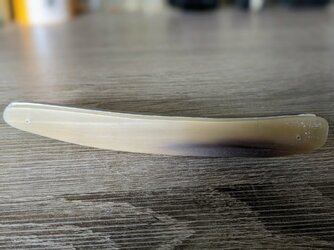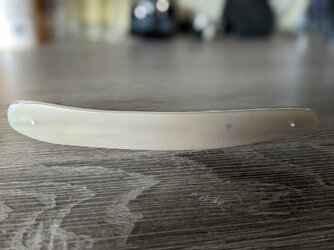Hey all,
I finished making some acrylic scales for a restore project, so of course now looking to refine what I learned by making (hopefully) some horn scales. I just received a horn blank from Maggard's that was advertised as being 1/8" but came in quite a bit thicker - almost 1/5". I want to lap these down but having never worked with horn before thought I'd ask here before screwing these things up - anything to note when sanding/cutting horn so that I don't permanently mar them?
I finished making some acrylic scales for a restore project, so of course now looking to refine what I learned by making (hopefully) some horn scales. I just received a horn blank from Maggard's that was advertised as being 1/8" but came in quite a bit thicker - almost 1/5". I want to lap these down but having never worked with horn before thought I'd ask here before screwing these things up - anything to note when sanding/cutting horn so that I don't permanently mar them?



